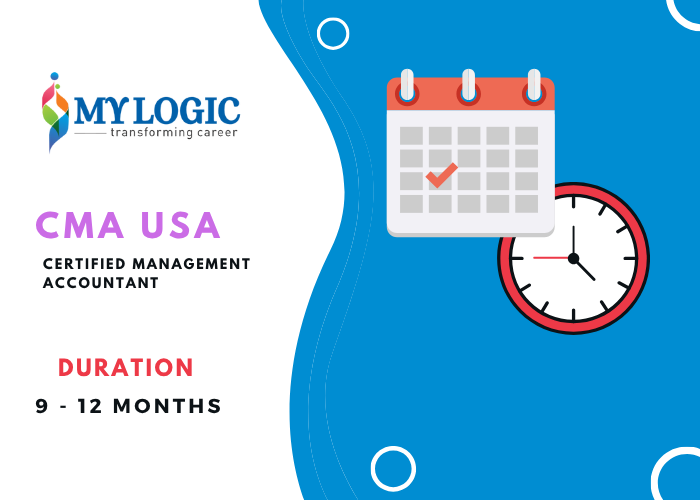CMA vs MBA: Which One Should You Choose for a Better Career?

Strong 8k brings an ultra-HD IPTV experience to your living room and your pocket.
In today’s competitive business landscape, professionals often find themselves torn between pursuing a CMA USA certification or an MBA degree. Both are highly regarded credentials that can lead to rewarding careers—but the right choice depends on your goals, background, and the career path you wish to pursue.
This blog will help you make an informed decision by comparing the scope, career outcomes, salary expectations, and global value of both programs. Let’s explore how MyLogic’s expert training can support your journey toward success in either path.
What is CMA USA?
The Certified Management Accountant (CMA USA) is a globally recognized credential offered by the Institute of Management Accountants (IMA), USA. This certification focuses on financial management, strategic planning, cost control, budgeting, and decision-making skills.
Key Highlights:
Duration: 6–12 months (self-paced or guided learning)
Exams: Two parts (Part 1: Financial Planning, Part 2: Strategic Financial Management)
Eligibility: Bachelor’s degree + 2 years of work experience (can be completed during/after the course)
With a strong emphasis on real-world financial analytics, CMA USA is ideal for professionals aiming for careers in corporate finance, auditing, or management accounting.
What is an MBA?
The Master of Business Administration (MBA) is a graduate-level program designed to provide a broad understanding of various business functions, including marketing, finance, human resources, operations, and strategy.
Key Highlights:
Duration: 1–2 years (full-time or part-time)
Curriculum: Broad-based, covers multiple business disciplines
Eligibility: Bachelor’s degree + entrance tests (like CAT, GMAT, etc.)
An MBA helps individuals develop managerial, leadership, and entrepreneurial skills, making it ideal for those seeking roles in general management, consulting, or business leadership.
Key Differences Between CMA and MBA
Feature
CMA USA
MBA
Duration
6–12 months
1–2 years
Focus
Financial management & strategy
General business and management
Cost
Moderate
Often expensive
Flexibility
Online/offline self-paced
Usually full-time or part-time
Exams
2 Parts
Multiple semesters & internal exams
Global Recognition
High in finance sector
Broad but varies by university
Career Focus
Finance, audit, accounting
Management, marketing, HR, finance
Career Opportunities After CMA
After earning the CMA credential, you can explore job roles such as:
Financial Analyst
Cost Accountant
Budget Analyst
Corporate Controller
Finance Manager
Internal Auditor
CMA USA holders are in demand across multinational corporations, banks, consulting firms, and even startups looking for financially intelligent decision-makers.
Career Opportunities After MBA
An MBA can open doors to various career paths, including:
Marketing Manager
Business Consultant
Operations Manager
Investment Banker
Product Manager
HR Manager
Depending on your specialization, an MBA offers broader opportunities across industries like finance, healthcare, IT, logistics, and more.
Salary Potential: CMA vs MBA
CMA USA Salary Range (India & Abroad):
Entry-level: ₹6–9 LPA
Mid-level: ₹10–18 LPA
Global Average (USA): $100,000–$120,000 per annum
MBA Salary Range (India & Abroad):
Entry-level: ₹5–12 LPA (varies by institution)
Mid-level: ₹12–25 LPA
Global Average (Top MBA schools): $90,000–$150,000 per annum
Please note: Compensation can differ widely based on the industry, employer, and geographic location.
Which is More Globally Recognized?
While both qualifications offer international recognition, CMA USA has a stronger global presence in the financial and accounting sectors, especially in countries like the USA, Canada, UAE, India, and Singapore.
An MBA’s global value depends heavily on the reputation of the business school, with top-tier institutions like Harvard, Stanford, and INSEAD carrying more weight than others.
Which Course is Right for You?
Choose CMA USA If:
You’re focused on a career in finance or accounting
You want a shorter, cost-effective program
You aim for international roles in finance
You want to study while working
Choose MBA If:
You’re looking for versatile business knowledge
You want to grow into leadership or management roles
You’re interested in entrepreneurship or consulting
You prefer a structured, full-time learning experience
✅ Final Thoughts
When choosing between CMA USA and MBA, there’s no one-size-fits-all answer. It depends on your career goals, learning style, financial investment, and timeline.
If your passion lies in finance, strategic planning, and analytics, then CMA USA is a laser-focused path that delivers high ROI. If you desire a broader business perspective with flexible job roles across sectors, then an MBA might be your best bet.
Whatever path you choose, ensure you have the right guidance and training. With MyLogic’s expert-led CMA coaching and industry-aligned support, you can take the next step toward your dream career with confidence.
FAQs
1. Is CMA better than MBA?
CMA is ideal for finance-focused careers, while MBA offers broader business exposure. The better choice depends on your career goals.
2. Can I pursue CMA and MBA together?
Yes, many professionals complete CMA during or after MBA to enhance their finance skills and marketability.
3. Which is easier: CMA or MBA?
CMA is shorter but exam-intensive. MBA spans a longer period with more diverse subjects. Your background will determine which feels easier.
4. Which pays more: CMA or MBA?
Both can lead to high-paying roles. However, CMA often offers better pay in finance roles, while MBA offers higher pay in management roles from reputed institutes.
5. Can I do CMA without an MBA?
Yes, CMA doesn’t require an MBA. You just need a bachelor’s degree and two years of relevant work experience (can be post-CMA too).
Note: IndiBlogHub features both user-submitted and editorial content. We do not verify third-party contributions. Read our Disclaimer and Privacy Policyfor details.






